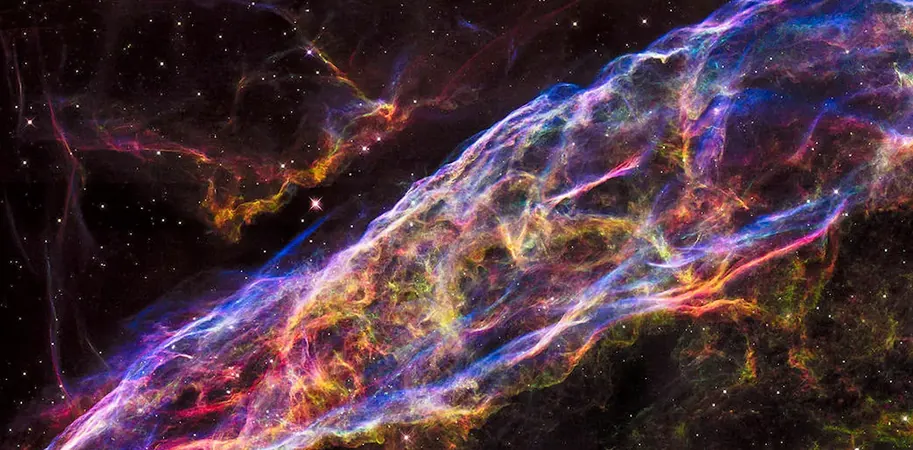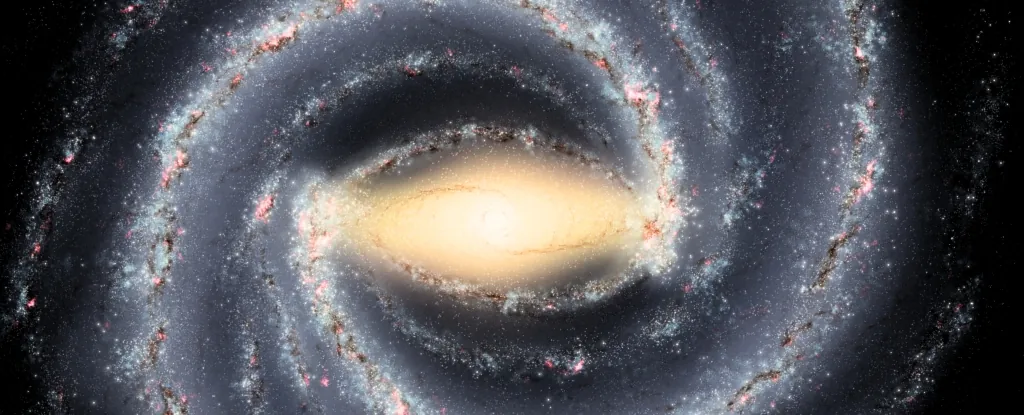
Unlocking the Secrets of Atoms: A Journey Through Creation
2025-06-23
Author: Olivia
What Are Atoms and Why Do They Matter?
Atoms are the building blocks of all matter. Think of them as tiny units that make up everything around you—from a single drop of water to the vastness of stars in the universe. They consist of a central nucleus containing protons and neutrons, surrounded by orbiting electrons.
Protons carry a positive charge, while electrons have a negative charge. Neutrons, as the name suggests, are neutral. In a balanced atom, the number of protons equals the number of electrons, giving it an overall neutral charge.
The Birth of Atoms: From Big Bang to Formation
The universe's first atoms, primarily hydrogen and helium, emerged about 400,000 years after the Big Bang, an explosive event believed to mark the universe’s inception around 14 billion years ago. At this early stage, the universe was incredibly compact and hot—about 1,000 times smaller than today.
Atoms took shape when the universe cooled down to around 5,000 degrees Fahrenheit (2,760 degrees Celsius), allowing electrons to settle around the nuclei. This process, often misleadingly termed 'recombination,' was actually a distinct formation event.
Beyond Hydrogen and Helium: How Heavier Atoms Are Created
While hydrogen and helium are the universe's most plentiful elements, almost everything around us is made of heavier atoms. So, how do these more complex atoms come into being?
The answer lies in the heart of stars. It’s in these fiery interiors that protons and neutrons collide with such force that they fuse together, creating heavier nuclei through a process known as fusion. This occurs under extreme heat, often exceeding 1 billion degrees Fahrenheit (556 million degrees Celsius), similar to the conditions just moments after the Big Bang.
The Power of Supernovae: Heavy Elements Made in Explosions
Interestingly, atoms heavier than iron are not formed in standard star environments but rather during supernovae—spectacular explosions marking the death of massive stars. When the core of a heavy star collapses, it unleashes an enormous amount of energy, allowing the formation of these denser elements.
Moreover, cosmic events like colliding neutron stars are believed to forge elements such as gold, propelling them across the universe in an exhilarating dance of stellar evolution.
Unsolved Mysteries: The Enigma of Dark Matter
Finally, while we’re uncovering the secrets of atomic creation, the universe holds other mysteries. Dark matter, a mysterious substance that doesn’t seem to be made of atoms at all, continues to baffle scientists. Research is ongoing to understand what it is and how it interacts with the rest of the universe.
Curious young minds, keep asking questions! If you're eager to learn more, let an adult help you send in your inquiries. Science is all about curiosity, and there are no age limits when it comes to exploring our cosmos.









 Brasil (PT)
Brasil (PT)
 Canada (EN)
Canada (EN)
 Chile (ES)
Chile (ES)
 Česko (CS)
Česko (CS)
 대한민국 (KO)
대한민국 (KO)
 España (ES)
España (ES)
 France (FR)
France (FR)
 Hong Kong (EN)
Hong Kong (EN)
 Italia (IT)
Italia (IT)
 日本 (JA)
日本 (JA)
 Magyarország (HU)
Magyarország (HU)
 Norge (NO)
Norge (NO)
 Polska (PL)
Polska (PL)
 Schweiz (DE)
Schweiz (DE)
 Singapore (EN)
Singapore (EN)
 Sverige (SV)
Sverige (SV)
 Suomi (FI)
Suomi (FI)
 Türkiye (TR)
Türkiye (TR)
 الإمارات العربية المتحدة (AR)
الإمارات العربية المتحدة (AR)